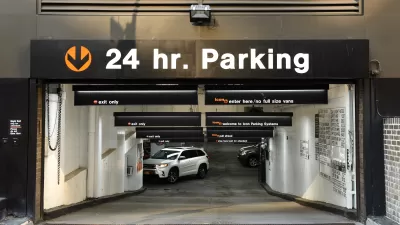Katie Pearce discusses the surprising findings of a new study from the Center for Housing Policy and the Center for Neighborhood Technology that evaluates why it can be more affordable to live in an “expensive” city.
We've heard a lot recently about Washington D.C.'s affordable housing crisis. So how could it be that a recent report would list the city as among the most affordable in the country?
"First and most importantly," says Pearce, "adjust for average income levels. Then,
factor in transportation costs. Using that formula, the D.C. region is
tops among 25 American metro areas in a new study from the Center for
Housing Policy and the Center for Neighborhood Technology that looks at
the ability of moderate-income households to shoulder the burden of housing and transportation costs [PDF]. The notoriously pricey Boston and San Francisco also make it into the top six."
"Measuring affordable living by looking strictly at housing costs,
without including transportation, 'tends to mislead people,' said Scott
Bernstein, president of the Center for Neighborhood Technology, in a
teleconference yesterday. Gathering this information comprehensively, he said, 'has profound implications for a set of policy choices.'"
FULL STORY: Why It Can Be More Affordable to Live in an “Expensive” City

Alabama: Trump Terminates Settlements for Black Communities Harmed By Raw Sewage
Trump deemed the landmark civil rights agreement “illegal DEI and environmental justice policy.”

Planetizen Federal Action Tracker
A weekly monitor of how Trump’s orders and actions are impacting planners and planning in America.

The 120 Year Old Tiny Home Villages That Sheltered San Francisco’s Earthquake Refugees
More than a century ago, San Francisco mobilized to house thousands of residents displaced by the 1906 earthquake. Could their strategy offer a model for the present?

In Both Crashes and Crime, Public Transportation is Far Safer than Driving
Contrary to popular assumptions, public transportation has far lower crash and crime rates than automobile travel. For safer communities, improve and encourage transit travel.

Report: Zoning Reforms Should Complement Nashville’s Ambitious Transit Plan
Without reform, restrictive zoning codes will limit the impact of the city’s planned transit expansion and could exclude some of the residents who depend on transit the most.

Judge Orders Release of Frozen IRA, IIJA Funding
The decision is a victory for environmental groups who charged that freezing funds for critical infrastructure and disaster response programs caused “real and irreparable harm” to communities.
Urban Design for Planners 1: Software Tools
This six-course series explores essential urban design concepts using open source software and equips planners with the tools they need to participate fully in the urban design process.
Planning for Universal Design
Learn the tools for implementing Universal Design in planning regulations.
Clanton & Associates, Inc.
Jessamine County Fiscal Court
Institute for Housing and Urban Development Studies (IHS)
City of Grandview
Harvard GSD Executive Education
Toledo-Lucas County Plan Commissions
Salt Lake City
NYU Wagner Graduate School of Public Service



























